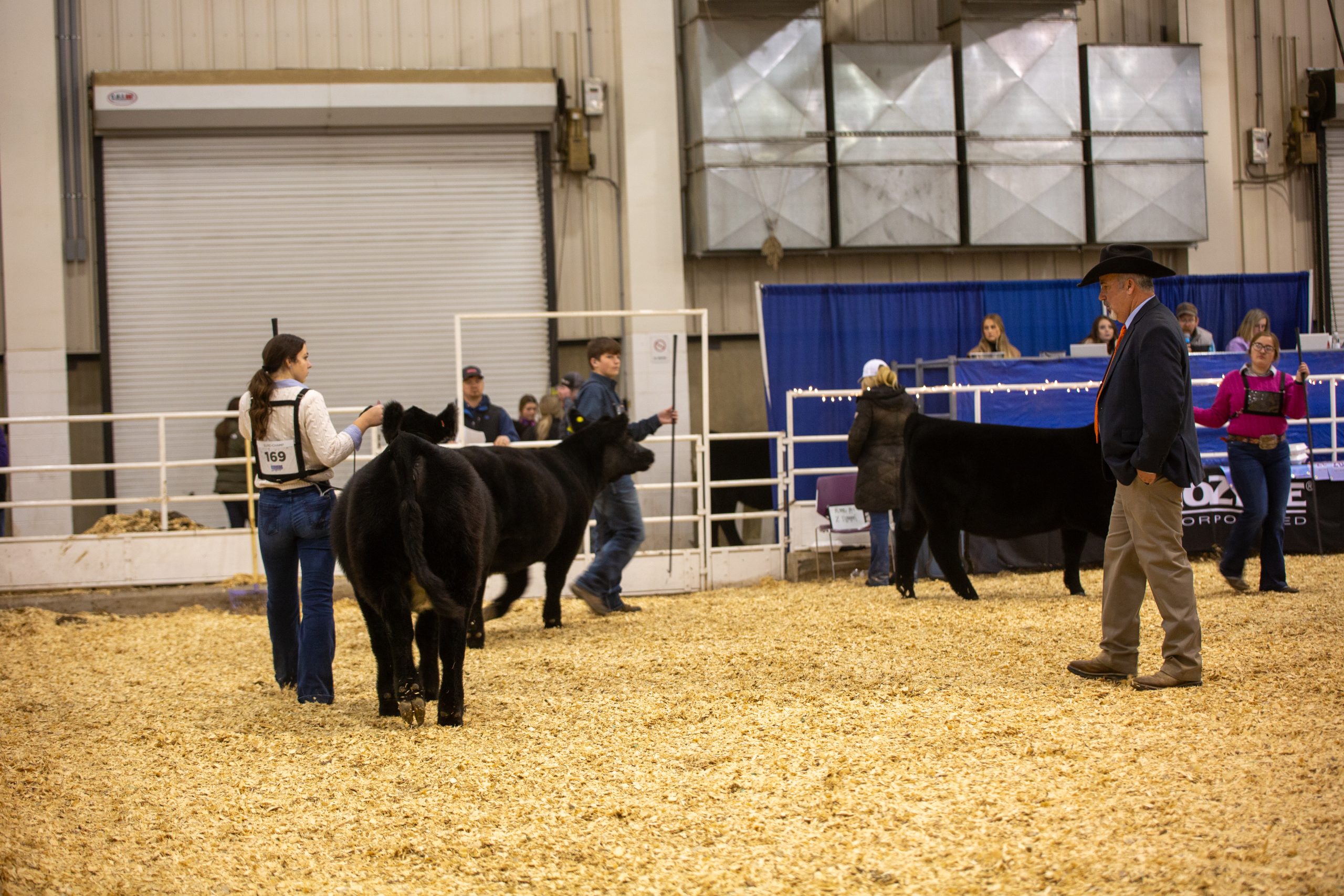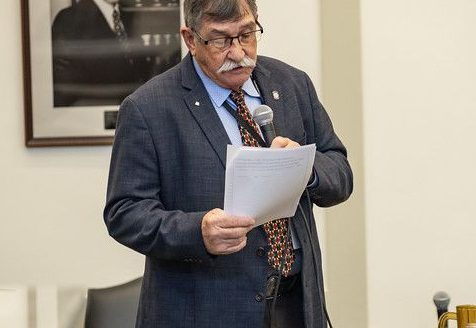Stock show season is the best season

Some youth’s lives revolve around baseball or softball. For others it’s cheer, volleyball or another competitive sport.
For youth involved in agriculture, livestock might be their focus. In Kansas, young livestock exhibitors commonly get their 4-H or FFA animals in the springtime and many keep them through the Kansas State Fair and Kansas Junior Livestock Show in early fall. Some kids keep them longer for national shows like the American Royal or National Western Stock Show.
At the local level
A dozen years ago, a pair of Extension agents in Haskell and Meade counties in Kansas, established the Cimarron Valley Livestock Series. Lacey Noterman, now at Walnut Creek Extension district, was then working at Haskell County Extension, and Elly Sneath, former agriculture Extension agent in Meade County, put their minds together and got to work.
“Our goal was to provide youth in the livestock industry with another valuable opportunity to learn and gain experience,” Noterman said. “As agents, we always sought ways to inspire our youth to challenge themselves and grow.”
The pair wasn’t quite sure what they were getting themselves into, but creating a show series has surpassed their expectations. Noterman said it was a humbling and gratifying experience for both agents as they credited the Kansas youth for their success.
Noterman added the people behind the scenes are the real champions.
“It’s the drivers, parents, siblings, guardians, and coaches who encourage them to keep pushing, work harder, and strive to improve,” she said. “So, hats off to all our members and their families—your dedication and support make this all possible.”
Today’s CVLS
CVLS continues to grow and has about 130 to 150 members representing nearly two dozen counties across Kansas. Leadership has evolved too, with Sneath moving on and Jade Green, Wild West District youth livestock agent, now playing a key role and guiding the program forward with Noterman.
Youth shows are popular throughout many regions of the United States, and in Kansas, CVLS has experienced significant growth during the past five to seven years in participation and shows.
Every livestock show in the state has the opportunity to sanction with CVLS and once approved details are sent to members.
“When we created CVLS, one of our primary goals was to make it affordable for every youth in Kansas. For a 4-Her or FFA member to join, they simply pay a $10 fee and complete a membership form,” Noterman said. “Once they’re a member, they can bring their livestock to any sanctioned show, but every CVLS member receives a t-shirt.”
For Noterman, it’s special to see the reach of the group with its origins in the southwestern part of the state.
“It’s always rewarding to see those shirts proudly worn at events like the Kansas State Fair and the Kansas Junior Livestock Show, with so many young people representing western Kansas,” she said. “It really highlights the community spirit and the reach of CVLS across the state.”
Noterman is a self-proclaimed advocate for youth to raise and show livestock. Most often kids will learn responsibility, work ethic, patience and resilience, financial management, public speaking, communication, leadership, teamwork, sportsmanship, problem-solving, and critical thinking.
“Our show kids gain unique life skills that go way beyond what they might learn in a classroom or on a sports team,” she said. “Among all the life skills and experiences gained through showing livestock, the most valuable may be the connections made.”
When CVLS was created, Noterman said the top priority was fostering connections, bringing people together to help shape and develop stronger leaders for the future.
“Some of the most rewarding moments come from witnessing the bonds formed through these shows,” she said. “It’s especially meaningful to hear younger exhibitors outside the ring watching a senior showman and saying, ‘I hope to be just like him when I grow up.’ Those moments show the true impact of these events building mentorship, inspiration and of course a legacy.”
The communities that hold CVLS shows also benefit.
“Without a doubt livestock shows in the series have a positive economic impact on the communities that host them,” Noterman said. “With around 200 to 300 exhibitors per show, families and participants contribute to the local economy at restaurants, gas stations, hotels, and much more in the surrounding area.”
For more information about CVLS visit https://cimarronvalleylivestockseries.weebly.com/.
Statewide
Ryan Higbie, manager of the Kansas Junior Livestock Show, said KJLS has a long history. Downtown Wichita first hosted the 4-H Stock Show, Nov. 12 to16, 1933.
“It was the first of its kind in Kansas, drawing 500 exhibitors and more than 1,000 head of livestock,” he said. “Although the name has changed to KJLS, the event has stayed true to its heritage by continuing to be the largest youth livestock show in the state.”
In its 92-year history, location has been one of the many changes.
“Several of today’s exhibitors have family members who can trace their show participation to the original home of KJLS, the Wichita Forum. The show was held there from 1933-1964,” Higbie said. “KJLS then moved to the Wichita Union Stockyards (1965-1972) and eventually to the Sedgwick County Fairgrounds (1973-1977), before arriving at the Kansas Coliseum in 1978.”
KJLS ran from 1978 to 2014 at the coliseum and in 2015 the show relocated to its current home—the Kansas State Fairgrounds in Hutchinson. The show has had continued growth, with the 2024 show drawing nearly 700 exhibitors and more than 1,400 animals, including steers, heifers, market hogs, breeding gilts, market lambs, breeding ewes, market goats, and commercial does.
“I think KJLS has maintained its popularity and longevity because it has served as a platform for generations of 4-H and FFA livestock exhibitors to showcase their skills,” Higbie said. “By creating an environment that is family-friendly and youth-focused, KJLS has consistently drawn hundreds of exhibitors from across the state.”
The show fosters friendships, allows exhibitors to further develop their leadership skills and helps build character as it relates to winning and losing in a competitive environment. Higbie sees the value of youth having a livestock project and competing at shows simply because they gain valuable life skills.
“Taking full responsibility for caring for an animal that is wholly reliant on its caregiver can prove to be a confidence builder for youth, all while teaching them accountability and self-discipline,” he said. “The experience also teaches youth what makes a good animal and how important proper care, and nutrition are to the success of the animal’s development.”
Having a show to compete against their peers across the state and even national shows boils down to one thing—and it’s not what one might think. Higbie believes it is all about building relationships.
“Competing with peers from across the state exposes youth to exhibitors with different backgrounds and allows them the opportunity to develop lasting friendships with people they otherwise may not have had the chance to meet,” he said.
The 2025 KJLS is set for Oct. 3 to 5 in Hutchinson. For more information visit www.kjls.net.
Kylene Scott can be reached at 620-227-1804 or [email protected].



